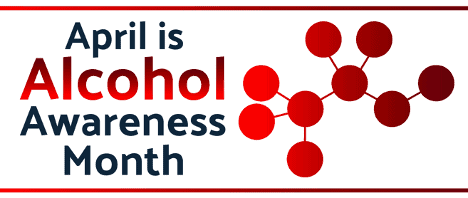In conjunction with Alcohol Awareness Month this April, SAFE Project interviews Anthony Alvarado, Founding Member & Board Chair at RISE TOGETHER.

Anthony was kind enough to sit down with SAFE Project to discuss some of the most prevalent myths about alcohol use among youth and adults alike, as well as share some of his own story.
What are some of the biggest myths that youth believe about alcohol?
Myth: Drinking makes you cool and popular.
Reality: Drinking doesn’t make you cool; popularity should never come at the cost of your health and safety. I had to learn this the hard way. Two DUIs later and countless reckless nights, drinking made me look like whatever is the opposite of cool.
Myth: Drinking in moderation is safe for young people.
Reality: While drinking in moderation may not immediately harm you, it can still lead to addiction, risky behavior, and long-term health problems.
Myth: Mixing alcohol with energy drinks can enhance your party experience.
Reality: Mixing alcohol with energy drinks can increase the risk of alcohol poisoning, heart problems, and other dangerous health issues. Not to mention, most energy drinks are already pretty unhealthy.
Myth: It’s safer to drink with parents and family at home, even if you are not of age.
Reality: Drinking with parents or family members at home can send mixed messages to young people about the dangers of alcohol. It can normalize underage drinking and increase the likelihood of developing a drinking problem later in life. Furthermore, it can create an unsafe and unpredictable environment, leading to accidents and impaired decision-making. It’s essential to promote responsible drinking habits and to discourage underage drinking altogether. I am happy to report neither of my children saw me drinking at home when growing up!
On the flip side, what are some of the myths that adults believe about alcohol?
One of the most significant myths adults believe about alcohol is that drinking in moderation is safe and poses no harm. While it is true that moderate drinking may have some health benefits, such as reducing the risk of heart disease, excessive alcohol consumption can lead to a range of health problems, including liver disease, high blood pressure, and cancer, as I saw with my father who passed from alcoholism at the age of 53 in 2018.
Another common myth is that social acceptance of alcohol use justifies its consumption. However, the societal norms around alcohol use, especially from what I have witnessed personally in Wisconsin, can create a false sense of security, leading individuals to underestimate the risks associated with excessive drinking. Lastly, many adults believe that the accessibility of alcohol is not a significant concern and that it is easy to control their consumption. However, research has shown that the easier it is to obtain alcohol, the more likely individuals are to drink excessively and develop alcohol-related problems. It is important to dispel these myths and promote a culture of responsible alcohol use that prioritizes moderation and awareness of potential risks.
How has alcohol use among youth changed since we were kids?
According to research, alcohol use among Wisconsin and Midwest youth has decreased over the past 20 years. The percentage of high school students who reported drinking alcohol in the past 30 days has declined from 47% in 1993 to 29% in 2019. Additionally, high school students binge drinking decreased from 37% in 1993 to 16% in 2019. Despite this positive trend, alcohol remains the most commonly used substance among youth, and further efforts are needed to prevent and reduce underage drinking.
The information cited was obtained from the 2019 Wisconsin Youth Risk Behavior Survey (YRBS), conducted every two years by the Wisconsin Department of Public Instruction. The survey collects data from Wisconsin public and private high school students on various health-related behaviors, including alcohol and drug use. The YRBS is part of a larger national effort by the Centers for Disease Control and Prevention (CDC) to monitor health-related behaviors among youth in the United States.
How can people approach a friend or family member who they suspect may have a problem with alcohol?
Approaching a friend or family member who may have a problem with alcohol can be complex and sensitive. Here are some tips based on research and my ten years of peer-driven work to help you approach the situation:
Choose the right time and place: Choose a time and place where you and your friend or family member can talk in private without distractions or interruptions. Avoid approaching them when they are drunk or under the influence of alcohol.
Express your concerns in a non-judgmental way: Start the conversation by expressing your concerns about their drinking behavior in a non-judgmental and supportive way. Use “I” statements to convey how their behavior affects you rather than blaming or accusing them.
Listen and validate their feelings: Allow your friend or family member to express their feelings and experiences about their drinking behavior. Validate their feelings and avoid minimizing or dismissing their concerns.
Offer support and resources: Let your friend or family member know you are there to support them and help them seek help. Offer resources such as support groups or professional help, and encourage them to seek help as soon as possible.
Set boundaries: If your friend or family member is not receptive to your concerns or refuses to seek help, it may be necessary to set boundaries to protect yourself and your relationship. This may include limiting contact or seeking outside help from a professional.
What else would you like to share about this issue to raise further awareness?
While it’s best to avoid alcohol altogether for optimal health, here are some tips for those who choose to drink:
Drink in moderation: Drinking in moderation means consuming no more than one drink per day for women and up to two drinks per day for men. Avoid binge drinking or consuming large amounts of alcohol in a short period of time, as this can lead to serious health problems.
Stay hydrated: Alcohol can dehydrate the body, so it’s important to drink plenty of water before, during, and after drinking alcohol. This can help prevent hangovers and reduce the negative effects of alcohol on the body.
Choose healthier options: Opt for healthier options when it comes to alcohol. Avoid mixing alcohol with sugary or high-calorie mixers, which can lead to weight gain and other health problems.
I have been an active WHOOP user since 2020. They have some exciting data about not drinking during sober October, including things like getting MUCH better sleep, higher HRV, lower resting heart rate, improved digestion, better skin, more time to spend on healthier things, and ultimately drinking less after not drinking for a month. Pretty cool!

SAFE Project and RISE TOGETHER have partnered to bring an engaging and meaningful presentation on substance use, mental health, wellness, and real stories of both loss and recovery to local school communities. These presentations are not the typical “drug assemblies” of the past, but are tailored to genuinely speak to youth on their own level. By sharing real-life stories of loss and recovery, the presentation helps students understand the impact that substance use can have on their lives and the lives of those around them. By providing practical tools and strategies for promoting mental health and wellness, the presentation empowers students to take control of their own wellbeing and make positive choices for their future.
Additional Resources
-
 Resource
ResourceJust the Facts: Alcohol
Get the facts you need to know about drinking so you can make an informed choice. -
 News
NewsAlcohol Awareness Month: Coping During the COVID-19 Pandemic
Learn about alcohol use disorder, the dangers of using alcohol as a coping mechanism, and more.


